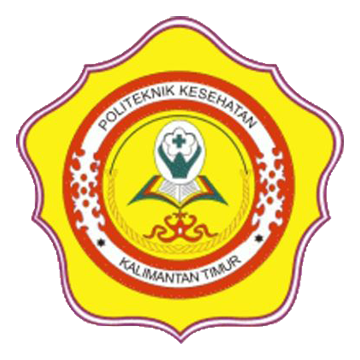Hubungan Sanitasi Lingkungan Dengan Kejadian Diare pada Balita di Rantauparapat
Abstract
As of today, diarrheal diseases are still a worldwide problem, particularly in developing countries. The study aims to analyze factors that affect the incidence of diarrheal diarrhea in preinfant populations. This type of research is descriptive, using the design of a sectional parallel with the chi square test. The study was carried out in the prapate region by August 6, 2020. The population of the study was mothers-mothers who had toddlers living in praprons. The number of samples taken is 100 mothers with babies under the age of 5. Sample sorting is done with primary data obtained by giving questionnaires online. According to data analysis, toddlers who develop diarrhea, as many as 73% of toddlers develop diarrhoea, and as many as 51% of children develop diarrhoea, according to the mother, toddlers who poop more than 3 times a day as many as 39% of toddlers and toddlers who pass through soft liquid waste by 31% of children. P value 0.01 0.05, which means that the water source used has a meaningful relationship with child diarrhea in the prapate region, of 100 respondents to a large percentage of those who have bad clean water sources.
Downloads
References
Badan Penelitian dan Pengembangan Kesehatan, (2013), Riset Kesehatan Dasar (Riskesdas 2013), Kementerian Kesehatan Republik Indonesia, Jakarta
Badan Pusat Statistik, (2018). Jumlah Kasus Hiv Aids, Ims, DBD, Diare, TB, dan Malaria Menurut Kabupaten Kota di Provinsi Sumatera Utara 2017. Sumatera Utara: Badan Pusat Statistik.
Cha, et al. 2016. The Effect of Improved Sanitation on Diarrheal Prvalence, Incindence and Duration in Children Under Five in the SNNPR State, Ethiopia : Study Protocol for A Randomized Controlled Trial. Bio Med Central. 27:2004
Gunawan NA. Gambaran Sanitasi Alat Makan dan Keberadaan Bakteri pada Alat Makan Pedagang Bakso Gerobak Kota Makassar. Makassar: Fakultas Kesehatan Masyarakat Universitas Hasanuddin; 2019.
I Made Subhawa Harsa. (2019). Hubungan Antara Sumber Air Dengan Kejadian Diare Pada Warga Kampung Baru Ngagelrejo Wonokromo Surabaya. Journal of Agromedicine and Medical Sciences. Vol. 5 no. 3: 124-129.
Kementerian Kesehatan RI (2017). Profil Kab Kota 2017. Labuhan batu: Kementerian Kesehatan RI.
Lidiawati, Meri. (2016). Hubungan Sanitasi Lingkungan Dengan Angka Kejadian Diare Pada Balita Di Wilayah Kerja Puskesmas Meuraxa Tahun 2016. Serambi Saintia. Vol. 4. No. 2: 1- 9.
Muhidin SA dan Abdurahman M. 2007.Analisis Kolerasi, Regresi, dan Jalur Dalam Penelitian. Bandung : CV. Pustaka Setia.
Murti, B. 2006. Desain dan Ukuran Sampel untuk Penelitian Kuantitatif dan Kualitatif. Jogjakarta : Gajah Mada University press.
Notoatmodjo, 2010. Metodologi Penelitian Kesehatan. Rineka Cipta : Jakarta.
Raini, M., Isnawati, A. (2016). Profil Obat Diare Yang Disimpan Di Rumah Tangga Di Indnesia Tahun 2013. Media Litbangkes, 26 (4), 227-234.
Rahman H.F, Widoyo Slamet, Siswanto Heri, Biantoro. Faktor-Faktor Yang Berhubungan dengan Kejadian Diare di Desa Solor Kecamatan Cerme Bondowoso : Nurseline Journal. 2016; 1(1): 2540- 7937
Rizcita Prilia Melvani, dkk. (2018). Analisis Faktor yang Berhubungan Dengan Kejadian Diare Balita Di Kelurahan Karyajaya Kota Palembang. Jurnal Jumantik. Vol. 4. No. 1: 57-68.
Sidhi, Alifian, Raharjo Mursid, Yunita Dewanti, dan Astorina Nikie. Hubungan Kualitas Sanitasi Lingkungan dan Bakteriologis Air Bersih Terhadap Kejadian Diare pada Balita di Wilayah Kerja Puskesmas Adiwerna Tegal. Jurnal Kesehatan Masyarakat Universitas Diponegoro. 2016: 4(3).
Silvana, Dwi. (2016). Faktor – Faktor Resiko Kejadian Diare Akut pada Anak 0-35 Bulan (BATITA) di Kabupaten Bantul. Sains Kesehatan. Vol 19. No 3. Juli 2016. ISSN 1411-6197 : 319-332.
Tambuwun, F., dkk. (2015). Hubungan Sanitasi Lingkungan Dengan Kejadian Diare Pada Anak Usia Sekolah Di Wilayah Kerja Puskesmas Bahu Manado. E-journal Keperawatan, 3 (2): 1-8. Diakses pada tanggal 24 Agustus 2020 dari web Https://Ejournal.Unsrat.Ac.Id/Index.Php/Jkp/Article/Download/8035/7596
WHO. (2013). Diarrhoea Disease. Diakses pada tanggal 24 Agustus 2020 dari web http://www.who.int/mediacenter/factsheets/fs330/en/
WHO. (2017). Diarrhoeal Disease. Website: Http://Www.Who.Int/Mediacentre/Factsheets/Fs330/En/ Diakses Pada Tanggal 24 Agustus 2020.
Widoyono. 2008. Penyakit Tropis Epidemiologi,Penularan, Pencegahan dan Pemberantasannya. Surabaya: Erlangga.
Copyright (c) 2021 Anggi Kurnia Adha Harahap, Lili Wardani Pohan, Nuraisah Tia Oktaviani Sitorus, Nurmaida Nurmaida, Tri Bayu Purnama

This work is licensed under a Creative Commons Attribution-ShareAlike 4.0 International License.
Copyright License:

This work is licensed under a
Creative Commons Attribution-ShareAlike 4.0 International License









